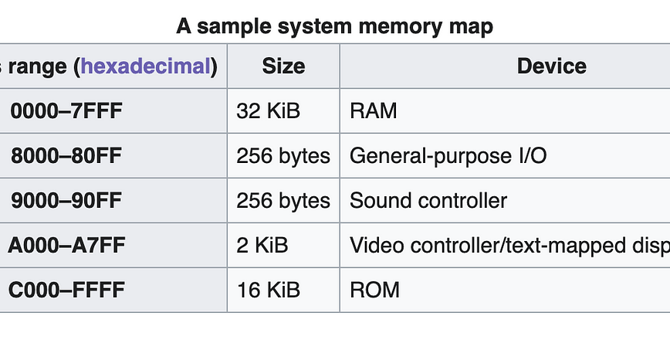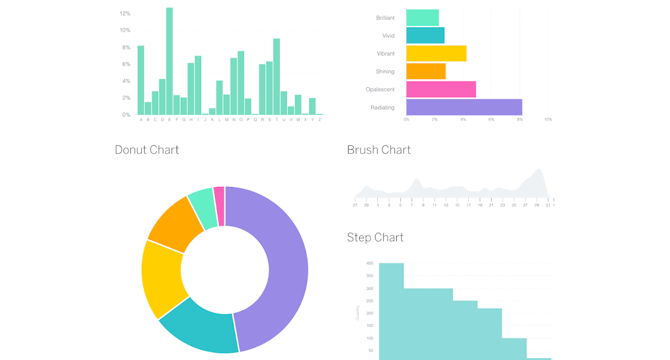Javascript
Dev
306

Image Credit: Dev
Why JavaScript? Actually it's ECMAScript
- JavaScript and ECMAScript are two terms often used interchangeably, but it's important to note that ECMAScript is the official standard for the language.
- JavaScript was created by Brendan Eich in 1995 to bring interactivity to HTML in Netscape, which was later copied by Microsoft as JScript.
- The browser wars led to ECMAScript being established as the standard, with JavaScript and JScript becoming dialects of it.
- JavaScript's popularity grew due to its cross-platform compatibility and ease of use, leading to its widespread adoption, and later expansions like Node.js and Deno.
Read Full Article
18 Likes
Medium
199

Image Credit: Medium
Canceling Fetch Requests in JavaScript with AbortController
- The AbortController in JavaScript allows for canceling fetch requests by creating an AbortController with a signal passed into the fetch call.
- The signal object, built on top of EventTarget, holds its state internally and dispatches an 'abort' event when controller.abort() is called.
- Using AbortController and signal, you can cancel fetch requests effectively, with the fetch promise getting rejected on abort and a 'AbortError' DOMException thrown.
- Creating new controllers for retry logic ensures a clean state for each request and simplifies cancel behavior in your code.
- Implementing canceling on demand allows for efficiently managing fetch requests, preventing wasted network activity and displaying stale data.
- In frontend frameworks like React or Vue, canceling fetches on unmount helps prevent errors and ensures UI consistency.
- Using setTimeout with AbortController provides a way to set timeouts for fetch requests and handle fallback behaviors.
- AbortController can be used beyond fetch, enabling the cancelation of timers, loops, and other long-running logic by checking the signal.
- By utilizing AbortController and signals, you can make asynchronous processes more responsive to changes in your application, improving overall user experience.
- The mechanics of AbortController revolve around creating controllers with signals to stop processes immediately, making it a simple and effective tool for managing asynchronous operations.
Read Full Article
12 Likes
Dev
22

Image Credit: Dev
Build a Simple Direct Messaging (DM) App Using JavaScript
- Article: Build a Simple Direct Messaging (DM) App Using JavaScript
- Description: This article guides beginners through building a basic DM interface using HTML, CSS, and JavaScript to practice essential web development skills.
- Features: Users can send messages, messages are displayed in the chat window, optional message storage using localStorage, clean UI.
- Possible Improvements: Add timestamps to messages, introduce multiple users, enhance mobile responsiveness, integrate with backend for real-time messaging.
Read Full Article
1 Like
Dev
386

Image Credit: Dev
The Subtle Trap of ISO Date Strings in JavaScript
- When dealing with dates and times in applications, handling different time zones can lead to unexpected challenges.
- JavaScript's parsing of ISO date strings can behave unexpectedly, causing inconsistencies when using new Date(str) and parseISO(str) functions.
- Full ISO datetime strings with a 'Z' at the end are parsed as UTC and converted to local time, while datetime strings without 'Z' are interpreted as local time by both functions.
- Date-only strings without a time component can lead to different results where parseISO(str) treats them as local time, while new Date(str) interprets them as midnight UTC, potentially causing discrepancies.
Read Full Article
23 Likes
Dev
306

Image Credit: Dev
JavaScript-less Mobile Menu with Tailwind
- The article explores creating a mobile navigation menu using the checkbox hack without JavaScript, focusing on CSS and Tailwind.
- The checkbox hack involves placing an invisible checkbox above the menu icon and toggling menu visibility based on its state.
- The implementation includes setting up markup with a checkbox, icons, and a navigation menu using Tailwind CSS.
- Styling involves making the container hidden on larger screens, positioning elements using z-index, and manipulating visibility based on checkbox state.
- Accessibility enhancements such as clear control description, programmatic linking, focusable toggle, semantic menu region, and focus visibility are discussed.
- Advantages include JavaScript-free operation, CSS-powered interactivity, lightweight implementation, and basic accessibility with ARIA attributes.
- Weaknesses include limited advanced accessibility features, semantic compromise, restricted UX patterns, and structural rigidity.
- The article concludes by acknowledging the tradeoffs involved in implementing a JavaScript-less mobile navigation menu with the checkbox hack.
- Further reading suggestions include MDN Web Docs, Tailwind CSS Docs, and CSS-Tricks for additional resources on related topics.
Read Full Article
18 Likes
Dev
280

Image Credit: Dev
Understanding and Mitigating JavaScript Memory Bloat
- Memory management in JavaScript is crucial for performance and user experience, especially in complex applications with large datasets.
- JavaScript memory bloat refers to inefficient memory usage leading to performance degradation in web applications.
- JavaScript's evolution with ECMAScript standards introduced complexities in memory management due to the rise of SPAs and frameworks.
- Garbage collection mechanisms like Mark-and-Sweep and Reference Counting are crucial for reclaiming memory in JavaScript.
- Identification of memory bloat involves understanding closures, event listeners, and management of large objects.
- Memory profiling tools like Chrome DevTools are essential for analyzing memory usage and identifying retained objects.
- Mitigation strategies include limiting scope, managing event listeners, and utilizing object pooling for optimized memory usage.
- Advanced techniques like using immutable data structures and debouncing or throttling events can further optimize memory management.
- Real-world applications like Chromebook OS and Netflix utilize intricate memory management techniques to optimize performance.
- Common pitfalls in memory management include failing to dispose event listeners and retaining reference cycles.
- Developers should prioritize memory management alongside other concerns to ensure efficient and scalable web applications.
Read Full Article
16 Likes
Medium
289

Image Credit: Medium
Let’s dive into three super useful JavaScript functions: map(), filter(), and reduce().
- map() transforms each element of an array by applying a function and returns a new array with the transformed values.
- filter() selects elements from an array based on a condition provided by a test function and returns a new array containing only the passing elements.
- reduce() blends all elements of an array into a single output using a reducer function that combines each element with an accumulator.
- map(), filter(), and reduce() are powerful higher-order functions in JavaScript that simplify array manipulation and make code cleaner and more readable.
Read Full Article
17 Likes
Dev
355

Image Credit: Dev
Daily JavaScript Challenge #JS-189: Group Anagrams
- Today's JavaScript coding challenge is about grouping anagrams
- Objective: Write a function to group anagrams within an array of strings
- An anagram is a word formed by rearranging the letters of another word
- Challenge participants need to create and test their solutions, sharing their approaches in the comments section
Read Full Article
21 Likes
Dev
570

Image Credit: Dev
Top 10 Underrated JavaScript Libraries You Should Explore in 2025
- JavaScript is evolving rapidly with new smaller, smarter libraries emerging alongside giants like React and Vue.
- 10 underrated JavaScript libraries for 2025 include Alpine.js for Vue-like reactivity, SolidJS for faster React-like reactivity, and HTMX for modern interfaces using HTML.
- Other libraries like tRPC for type-safe APIs, Shoelace for customizable UI components, and Qwik for resumable apps with partial hydration are also highlighted.
- The list also includes Zustand for state management, Valibot for validation, Radix UI for building design systems, and Chart.xkcd for humor-infused data visualizations.
Read Full Article
21 Likes
Medium
80

Image Credit: Medium
Creating an Arm32 emulator in JavaScript part 3
- An Arm32 emulator is being created in JavaScript, with the ability to easily add and remove devices to the CPU for reading and writing to addresses.
- A MemoryController interface is being developed to map devices to memory regions, allowing attachment and detachment of devices, as well as read and write operations for 8 and 32 bit unsigned integers.
- Implementing the MemoryController involves functions for mapping and unmapping devices, reading and writing unsigned integers, and retrieving devices based on addresses.
- The CPU is updated to integrate the MemoryController, providing an abstraction layer for connecting various devices using the address space, enabling communication with different devices from programs.
Read Full Article
4 Likes
Medium
307

Image Credit: Medium
Optional Chaining in JavaScript Works Differently Than You Think
- Optional chaining in JavaScript allows you to safely navigate through an object's structure without causing errors if a value is missing.
- The ?. operator checks for null or undefined and returns undefined instead of throwing an error.
- Only null and undefined will short-circuit the optional chaining, not other falsy values like 0 or false.
- Optional chaining works for nested objects, stopping the chain if any part is null or undefined.
- You can use optional chaining not just for property access but also to safely call methods or functions that may not exist.
- It is important to note that optional chaining does not convert null or undefined to empty objects but simply stops the chain.
- Nullish coalescing (??) complements optional chaining by only falling back on null or undefined values.
- Combining nullish coalescing with optional chaining provides a safer way to access data with backup values.
- Using ?? and || together in an expression requires parentheses to define evaluation order.
- Optional chaining and nullish coalescing change how JavaScript processes data access, avoiding unexpected behavior and errors.
Read Full Article
18 Likes
Dev
329

Image Credit: Dev
Understanding Promises in JavaScript: A Formal Introduction
- Asynchronous programming is crucial in web development, and JavaScript's single-threaded nature relies on Promises for managing non-blocking operations.
- Promises act as proxies for values that may resolve in the future, enhancing code readability and reducing callback hell.
- Promises have three states: Pending, Fulfilled, and Rejected, and once settled, they become immutable.
- Consuming Promises involves using .then() for resolution, .catch() for errors, and .finally() for executing code regardless of outcome. Promise chaining and error handling are key features.
Read Full Article
19 Likes
Medium
213

Image Credit: Medium
Import Maps and Built In Modules in JavaScript Runtimes
- Import maps provide instructions to JavaScript runtimes on how to load modules, offering a more direct and explicit approach compared to Node's resolution process.
- By defining mappings in an import map inside HTML, browsers can understand and rewrite bare specifiers to valid URLs before initiating fetch requests.
- Import maps allow mapping multiple names and support scoped overrides to manage module versions in different parts of the codebase.
- They do not mix well with dynamic import() unless all specifiers are covered by the map, and caching may require query params for file changes.
- Built-in modules in JavaScript runtimes like Node and Deno eliminate the need for bundlers and loaders, with Deno using stable URLs for imports and managing caching internally.
- Node's built-in modules like fs, path, and http are part of the core runtime, while Deno offers a minimal runtime with modules loaded from stable URLs.
- Deno's strict module loading behavior requires explicit imports for both local files and remote resources, improving predictability across projects.
- Deno caches modules based on their full URLs, ensuring that even small changes trigger separate cache entries and enabling easy updates by changing the URL.
- Importing modules in Deno directly points to the source, eliminating the need for dependency managers or node_modules folders and providing a self-contained project.
- Projects in Deno are explicit, direct, and organized without hidden dependency graphs, offering bundling and compilation features for packaging projects without additional dependencies.
Read Full Article
12 Likes
Dev
93

Image Credit: Dev
Shocking Things You Can Do in JavaScript
- JavaScript has evolved with powerful capabilities that eliminate the need for popular libraries, such as set operations that replace lodash, non-destructive array methods, and object grouping.
- New features like logical assignment operators, top-level await for async module initialization, and private class features enhance code conciseness and encapsulation.
- Text segmentation with Intl.Segmenter improves handling of languages without spaces between words, while Atomics and SharedArrayBuffer enable true parallelism in JavaScript.
- These features signify the continuous evolution of JavaScript, offering developers cleaner, more maintainable code and reducing reliance on external dependencies.
- By leveraging these native solutions, developers can optimize performance and discover the hidden capabilities of modern JavaScript.
Read Full Article
5 Likes
Javarevisited
356

Image Credit: Javarevisited
Top 5 Udemy Courses to learn D3.js for Data Visualization with JavaScript in 2025 - Best of Lot
- D3.js is a popular JavaScript library for creating interactive data visualizations on the web, commonly used by Data Scientists and Analysts.
- Several courses are available in 2025 to learn D3.js, teaching how to create interactive visualizations and charts by binding data to web elements.
- These courses cover basics of data visualization with D3, including building various types of charts like Bar charts, Pie charts, and Mind maps.
- Learning D3.js can be valuable for professionals needing to present data insights effectively to stakeholders and business audiences.
Read Full Article
21 Likes
For uninterrupted reading, download the app